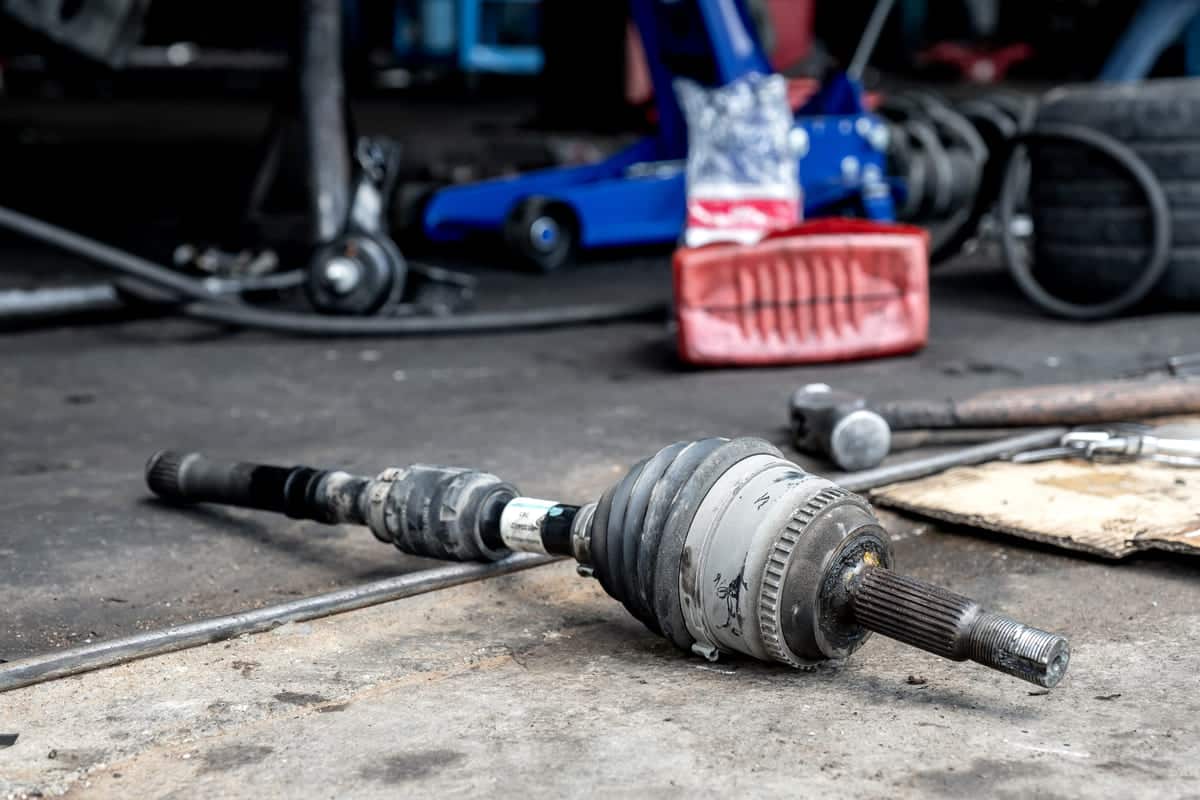Axles are key in automotive and mechanical engineering, they provide stability and movement. They come in live, dead, and tandem axles, each for a purpose. They are crucial for vehicle control and load carrying.
What Is an Axle?
An axle is a rod or shaft that rotates wheels or gears. It connects the wheels to the vehicle and makes them move. Axles carry the weight of the vehicle and its load. They keep the wheels in line and running.
There are live axles and dead axles. Live axles drive the wheels, dead axles don’t. Mechanics use axles in cars, trucks, and bicycles. They keep everything stable and working.
Without axles, vehicles wouldn’t move properly. They are essential for safe and efficient transport.
References
- Axle. Wikipedia. Retrieved from
- Axle. Britannica. Retrieved from https://www.britannica.com/dictionary/axle
- What Are Axles?. Kia. Retrieved from
What are the Different Types of Car Axles?
Car axles are the parts that help your motor vehicle move and stay stable. There are several types of axles, each for a purpose.
Front Axle: The front axle holds your car’s front wheels. It helps with steering and carries the weight of the car at the front. This axle also absorbs the shocks from the bumps on the road making your ride smoother. Front axles usually have components like the beam, stub axles, and brakes.
Rear Axle: The rear axle holds the back wheels. It carries the weight of the car and transmits power from the to the wheels to make the car move. Rear axles come in two types: drive axles and dead axles. Drive axles provide power from the engine, dead axles just carries the weight. The rear axle is important for traction and stability.
Stub Axle: Stub axles connect the front wheels to the front axle. It allows the wheels to turn left and right so you can steer the car. Each front has its own stub axle which is attached to the front axle through kingpins, bearings or bushes. Stub axles is important for easy movement and smooth handling.
Live Axle: A live axle drives the wheels. It transmits power from the engine to the wheels to make the car move forward or backward. Live axles are used in rear-wheel-drive vehicles. It has a differential, axle shafts, and a housing that contains lubrication oil. Live axles is important for transmitting engine power to the wheels.
Dead Axle: A dead axle doesn’t drive the wheels. It just carries the weight of the car and keeps it balanced but doesn’t help with movement. Dead axles are found in trailers and bigger vehicles like trucks. These axles are simpler in design compared to live axles since they don’t have to transmit power.
Tandem Axle: Tandem axles have two axles side by side. They are used in big trucks to carry heavy loads. These axles provide extra support and stability. Tandem axles helps to distribute the weight more evenly across the vehicle, reduce the strain on each axle and increase load capacity. This setup is important for vehicles that need to carry heavy or bulky items.
Each type of axle has its own purpose, so your car can move smoothly and safely. Knowing these types will help you understand how your car works.
References
- Car Axles. Allstate. Retrieved from
- Drive axle. Wikipedia. Retrieved from
How Does a Car Axle Work?
Car axles are important in making your car move and stable. Here’s a simple step by step explanation of how an axle works.
Step 1: Connects Wheels: The axle connects the car’s wheels to the vehicle. It holds the wheels in place and makes them rotate together.
Step 2: Transmits Power: In a live axle, the engine sends power to the axle. The axle then transmits that power to the wheels.
Step 3: Carries Weight: The axle carries the weight of the car and its occupants. It distributes that weight across the wheels and keeps the car balanced.
Step 4: Absorbs Shocks: As you drive, the axle absorbs the shocks from bumps and potholes. This makes your ride smooth and protects other parts of the car.
Step 5: Allows Steering: For front axles, they allow the wheels to turn left or right. This helps you steer the car and turn.
Step 6: Keeps Alignment: The axle keeps the wheels aligned. Proper alignment means the car drives straight and doesn’t wobble or drift.
Step 7: Keeps Stable: By carrying weight and transmitting power, the axle keeps your car stable. Stability is important for safe and efficient driving.
Each step shows how important the axle is for a smooth driving experience. Knowing this will help you understand how your car works.
References
- Car Axles. Acko. Retrieved from
- What is a Car Axle and How Does the Axle Work?. Acko Drive. Retrieved from
What are the Different Components of a Car Axle?
Car axles have several parts that work together to support the vehicle, transmit power, and move smoothly. Knowing these parts will help you understand how your car works.
Here are the parts of a Car Axle:
- Axle Shaft
- CV Joints (Constant Velocity Joints)
- Differential
- Bearings
- Axle Housing
- U-Joints (Universal Joints)
- Seals
- Gaskets
- Flanges
- Wheel Hubs
- Kingpins
References
- What is a Car Axle and How Does the Axle Work?. AckoDrive. Retrieved from
What are the Common Issues with Car Axles?
Axles are strong but they can still have issues that affect your car’s performance and . Knowing these issues will help you spot them early and fix them.
Common Issues with Car Axles:
- Worn CV Joints
- Broken or Bent Axle Shaft
- Leaking Seals
- Bad Bearings
- Noisy Differential
- Loose U-Joints
- Cracked Axle Housing
- Misaligned Axle
- Rust and Corrosion
- Wheel Hub Problems
References
- What Is a Car Axle?. Progressive. Retrieved from https://www.progressive.com/lifelanes/on-the-road/what-is-a-car-axle/


